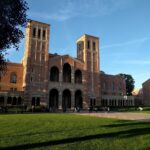9/11-101
September 11th, 2001 is now a part of U.S. history, and so the issue of how to teach about it in high school history classes is necessary, albeit controversial.
The Foreign Policy Research Institute (FPRI) and the American Institute for History Education (AIHE) hosted a Summer Institute for Teachers in Philadelphia this June. Mary Habeck, associate professor of strategic studies at John Hopkins University and author of Knowing Your Enemy: Jihadist Ideology and the War on Terror, spoke on the topic, “Teaching the Long War and Jihadism.”
In an essay based on her presentation, Habeck explained that the “long war” she is referring to is the war on terror.
She began by giving a quick and superficial background of Muslims, explaining the plurality of viewpoints within Islam, saying that “It is important to first introduce students to the ideology of the people who attacked us on 9/11, so that they can differentiate them from ordinary Muslims and ordinary Islamic beliefs.” There are approximately 1.5 billion Muslims worldwide, and, of those, perhaps a few thousand subscribe to the global jihadist belief system held by the perpetrators of the 9/11 attacks, argued Habeck.
Islamists—which she alternatively referred to as fundamentalists—believe in political Islam, said Habeck; they make up perhaps 15-20% of Muslims and the fastest growing Islamic sect. Islamists vary in their beliefs and some are even open to democracy, claimed Habeck. Whether Muslims would agree with that statement, of course, depends on who you ask. Ayatollah Khomeini, former Supreme Leader of Iran, in his Islamic Government or Islamic Government: Authority of the Jurist, not surprisingly makes an argument that Shari’a law is the only law for Muslims, while scholar Ahmad Moussalli, a researcher of Islamic fundamentalism, argues in his book The Islamic Quest for Democracy, Pluralism, and Human Rights that Islam is compatible with democracy.
The more militant Islamists, or jihadists, “argue that violence is necessary in order to achieve a perfect Islamic state,” and the global jihadist (salafi jihadiyya) sect, she argued, believe that such violence should be directed at the U.S.
According to a 2007 Strategic Studies Institute (SSI) article by U.S. Air Force Lieutenant Colonel Sarah Zabel, “Al-Qaeda plays a leading role in the larger movement of global jihad, a splinter faction of militant Islamism intent on establishing its vision of strict Islamic rule in the Muslim world through armed action.”
Rebutting a common interpretation of jihad, which defines the term as “holy war,” Habeck argued that “Jihad actually means struggle, not war or killing.” She explained that Muhammad preached peace to his people but “then something terrible happened. He and his small group of followers were persecuted,” causing them to flee to Medina where “Muhammad began to receive revelations that struggling was more than just struggling to understand how to follow God—it was about self-defense.” While based in fact, this interpretation is perhaps a bit too simplistic since nowhere does Professor Habeck explain that the history and founding of Islam, while certainly spiritual and religious, was also a militarily expansion.
Richard Gabriel, professor at the Army War College, wrote Muhammad: Islam’s First Great General (Campaigns and Commanders), and tells the story of Muhammad as a successful military and political leader. In it, he describes Muhammad’s “transformation of the Arab armies and their manner of warfare” and said that Muhammad’s military legacy “provided his successors with the means to conquer the rest of pagan Arabia…and embark on the great Arab conquests.”
The purpose of Habeck’s lecture was, she said, to “help students place this evolution of global jihadi thinking into some kind of framework, within Islam in general and within jihadism.” She argued that Al Qaeda’s justification for the 9/11 attack was that it “regards America as the ‘greater unbelief,’ the eternal enemy.” Habeck expressed her opinion that it is important for students to see that “the global jihadis achieved none of their strategic goals [for the U.S. to leave Islamic lands and to convince Muslims to join al Qaeda] on 9/11.” Notice here that she appears to conflate ‘jihadis’ with ‘al Qaeda.’ In contrast, Dr. M. Zuhdi Jasser, President of the American Islamic Forum for Democracy, said in the Washington Times on August 13th that “Al Qaeda had nothing to do with the string of radical Islamists arrested across the country” and that “The only thing these radicals have in common is their belief in a militant version of political Islam.”
To end her discussion, Professor Habeck categorized the different opinions on what motivated the 9/11 attacks, saying that
“One way you can help your students think about the U.S. in this war is the fact that the global jihadis are now very unified, whereas the U.S. is very diverse. There is very little unity on what we think happened on 9/11 and where it is all going.”
According to Habeck, there are five possible views on the 9/11 attacks, each with an identifiable enemy, and operationalizable war objectives.
- The attacks were a crime. Bin Laden is the enemy. Bin Laden should be arrested.
- The attacks were a result of a “clash of civilizations,” making the Arab or Muslim world the enemy. She argued that the recourse to this is simply diplomatic and international pressures.
- The attacks were the result of a global insurgency (the view she ascribes to the U.S. military) with al Qaeda and its affiliates as the enemy. She suggested that military, cultural, and economic counter insurgency efforts would be the solution in this scenario.
- The attacks were motivated by an Islamic reformation, making the enemy the Islamists and/or jihadis with an “enlightenment” solution.
- The attacks were part of a fourth world war, the “long war” on terror. Nation-states, such as Afghanistan, Iraq, Iran, Saudi Arabia, would therefore be the enemy and the solution would be to invade those countries and begin a nation-building process.
One aim of Habeck’s lecture was to aid teachers in educating students on the government’s mindset regarding the war on terror, or “how the Bush administration thought about the war, how the military thinks about it.” According to Habeck, “The Bush administration thought about it in terms of nation-states,” which would be, according to her simplification of 9/11 viewpoint options, a category five perspective. The Obama Administration, she said, “seems to see it as a law enforcement [category one] and counter-insurgency problem worldwide [category three].” She then predicted that the Obama Administration will downplay “the military while offering advice and aid to individual states.”
According to a September 30th article in The Atlantic, many young children are hardly aware of what occurred on 9/11, much less how it transformed this country. Michael Volodarsky, former Ground Zero Museum Workshop tour guide, told The Atlantic that he guided a group of fourth graders and “about half of the group knew definitively that 9/11 was a terrorist attack that killed thousands of people and the remainder of the group had either vaguely heard of it or did not know of it at all.”
Sarah Carlsruh is an intern at the American Journalism Center, a training program run by Accuracy in Media and Accuracy in Academia.




